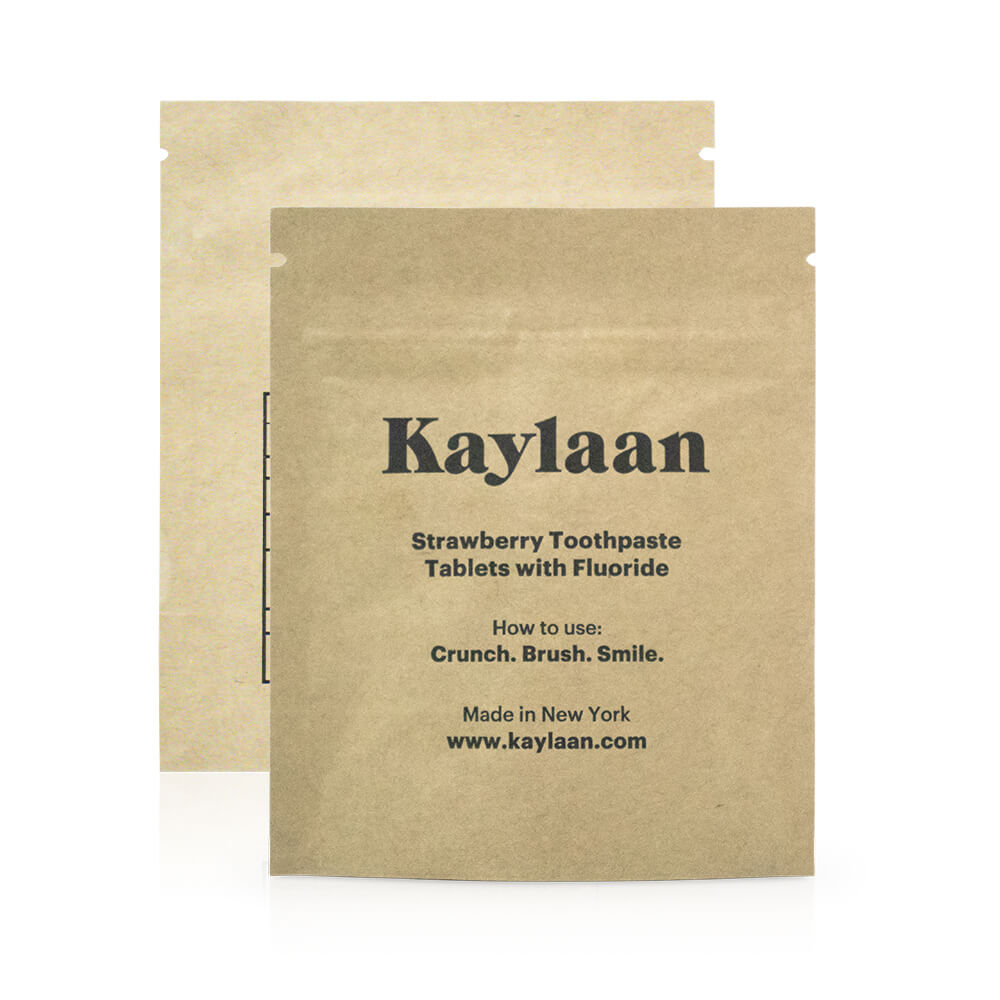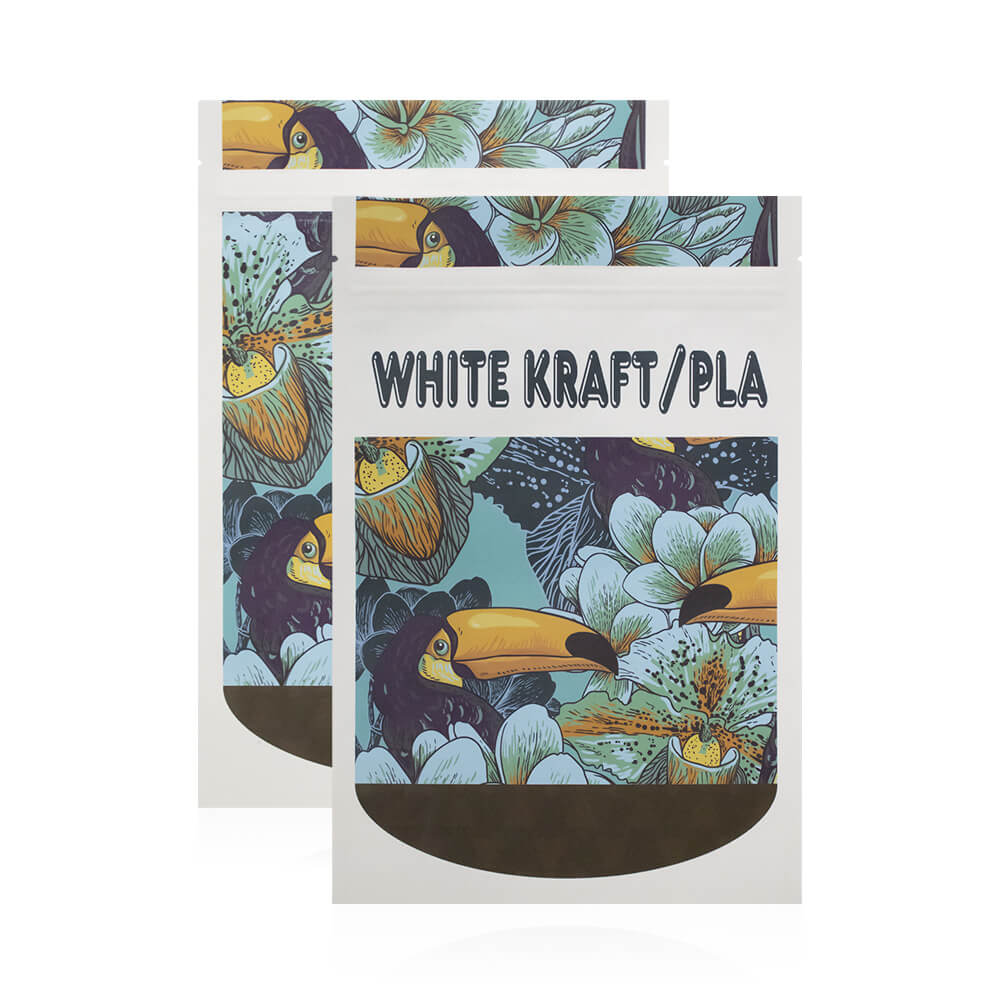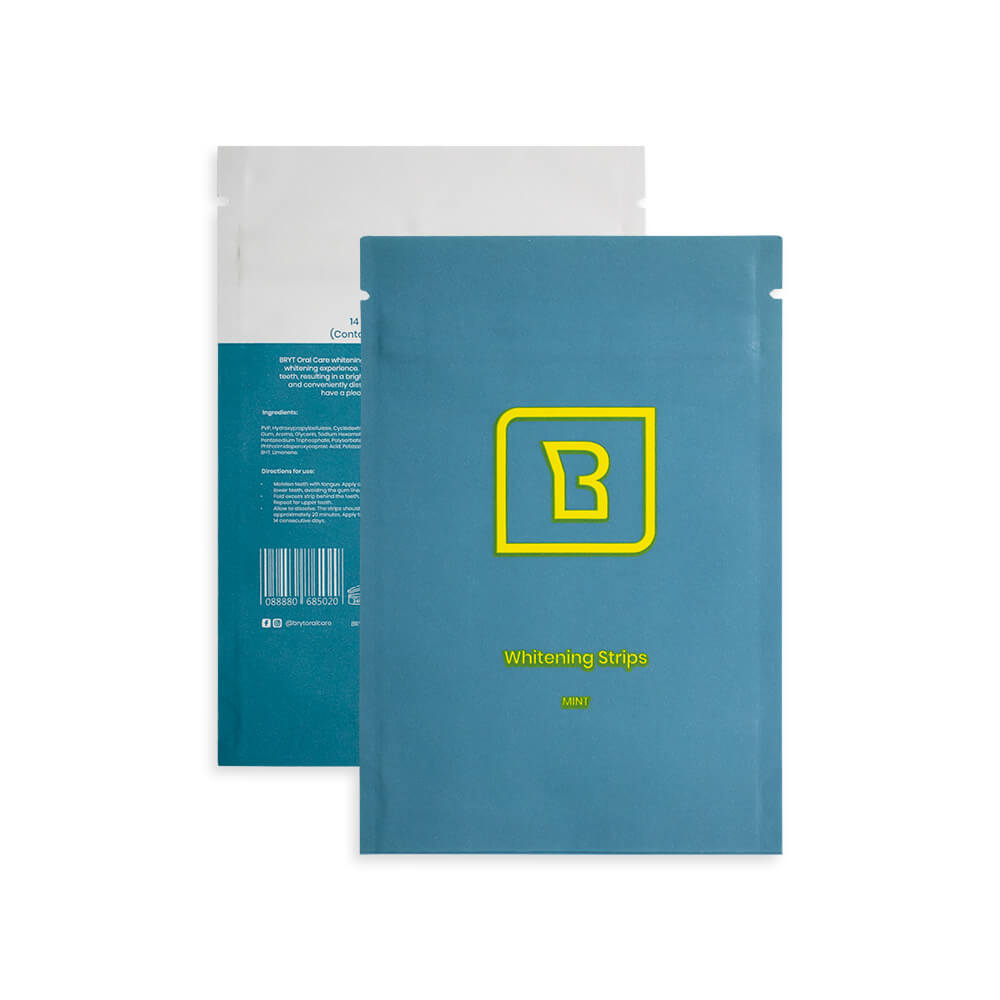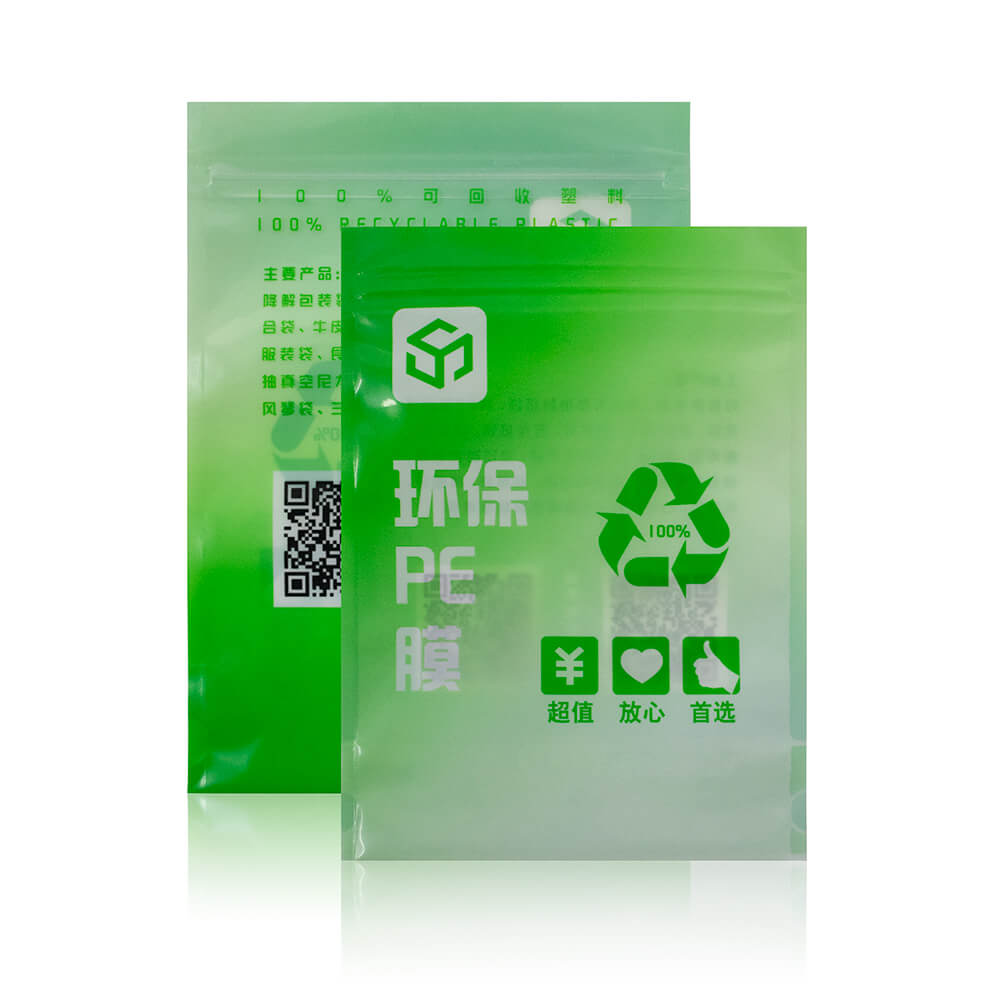Home » Bags & Pouches » Sustainable Pouches » Kraft Sustainable Pouches
Kraft Sustainable Pouches
Sustainable bags are eco-friendly creations, crafted to have a minimal footprint on the environment. Flexible packaging has inherent sustainability features that make it a great choice for customers interested in improving their environmental impact.
Please note that we have a MOQ for our pouch. For pouches in stock, the MOQ is 500 pcs. For customized pouches, please see the MOQ as followed:
1, Digital Printing — 500 pcs
2, Gravure Printing — 5,000pcs
Rinpac assists you throughout your project: bag shape, material, thickness, capacity and printing options. Please contact us or mark your requirements on the inquiry quotation.
Order single or thousands of items at a time. Our warehouse and flexible shipping options are available for last-minute, deadline critical orders.
- Free Sample
*Customization is always available, please mark down your need in cart or just contact us.
Specification
| Features | High-barrier films Photo-quality images Glossy or matte finishes Transparent + clouded windows Puncture and tear-resistant Press-to-close zippers |
| Material | Biodegradable material |
| Thickness | Per the customer’s request |
| Feature | High barrier, moisture-proof, biodegradable |
| OEM | Yes |
| MOQ | 500 PCS |
| Custom Order | Accept |
Video
Request A Quote
Need something helped in a short time? We’ve got a plan for you.
Introduction to Kraft Sustainable Pouches
In recent years, the demand for eco-friendly and sustainable packaging solutions has surged dramatically, driven by consumers’ growing environmental consciousness and the need for businesses to adopt more sustainable practices. Kraft sustainable pouches have emerged as an innovative solution to address these concerns, offering a versatile and eco-friendly packaging option for a wide range of products. In this comprehensive guide, we delve into the world of Kraft sustainable pouches, exploring their benefits, applications, and why they are a superior choice for both consumers and businesses alike.
What are Kraft Sustainable Pouches?
Kraft sustainable pouches are packaging solutions crafted from biodegradable and compostable materials, primarily derived from sustainably sourced Kraft paper. These pouches are designed to offer the same functionality and convenience as traditional packaging options while significantly reducing their environmental impact. By utilizing materials that are renewable and recyclable, Kraft sustainable pouches help mitigate the adverse effects of traditional packaging on the environment.
The Manufacturing Process
The manufacturing process of Kraft sustainable pouches involves several key stages, all aimed at ensuring the highest levels of sustainability and quality. It begins with the sourcing of responsibly managed Kraft paper, which is then processed using eco-friendly techniques to create the pouches. The use of water-based inks and adhesives further enhances the environmental credentials of these pouches, ensuring that they are entirely safe for both consumers and the planet.
Understanding the Need for Sustainable Packaging
In today’s rapidly evolving consumer landscape, there is a growing awareness and concern about the environmental impact of packaging materials. Traditional packaging solutions, often made from non-biodegradable plastics and other harmful materials, have contributed significantly to pollution, waste accumulation, and resource depletion. As consumers become increasingly environmentally conscious, there is a pressing need for more sustainable packaging alternatives that minimize environmental harm while meeting the functional and aesthetic requirements of modern packaging.
Environmental Impact of Traditional Packaging
Traditional packaging materials, such as plastic, pose significant environmental challenges throughout their lifecycle. The production of plastic packaging involves the extraction of fossil fuels, the release of greenhouse gases, and the consumption of finite resources. Additionally, plastic packaging is notorious for its non-biodegradable nature, leading to long-term pollution and ecological damage.
Once discarded, plastic packaging often ends up in landfills or litters the natural environment, where it can take hundreds or even thousands of years to decompose fully. This accumulation of plastic waste not only spoils landscapes and harms wildlife but also contributes to the global plastic pollution crisis, threatening ecosystems and human health alike.
Rise of Sustainable Packaging Solutions
In response to these pressing environmental concerns, there has been a significant shift towards sustainable packaging solutions that prioritize environmental responsibility and resource efficiency. Sustainable packaging aims to minimize the environmental impact of packaging materials throughout their lifecycle, from production and distribution to disposal and beyond.
One of the most promising trends in sustainable packaging is the rise of biodegradable and compostable materials, such as Kraft paper, bioplastics, and plant-based polymers. These materials offer a renewable and environmentally friendly alternative to traditional plastics, with the added benefit of being biodegradable and compostable, meaning they can break down naturally into non-toxic components without leaving behind harmful residues.
Furthermore, sustainable packaging solutions often incorporate innovative design features and technologies aimed at reducing material usage, optimizing packaging efficiency, and enhancing recyclability. From lightweight designs that minimize packaging waste to refillable and reusable packaging formats that encourage circularity, sustainable packaging solutions are driving positive change across industries and reshaping the future of packaging.
Features and Benefits of Kraft Sustainable Pouches
Kraft sustainable pouches are revolutionizing the packaging industry with their unique features and numerous benefits. From their eco-friendly material composition to their exceptional durability and strength, these pouches offer a sustainable packaging solution that meets the demands of both consumers and businesses alike.
Material Composition
At the heart of Kraft sustainable pouches lies their environmentally friendly material composition. These pouches are primarily crafted from Kraft paper, a renewable and biodegradable material sourced from sustainably managed forests. Unlike traditional plastic packaging, which relies on finite fossil fuels and contributes to pollution, Kraft paper is derived from wood pulp, making it a renewable resource that can be replenished through responsible forestry practices.
Additionally, Kraft sustainable pouches may incorporate other eco-friendly materials such as bioplastics and plant-based polymers, further enhancing their sustainability credentials. These materials offer excellent barrier properties to protect the contents of the pouches while ensuring that they remain biodegradable and compostable at the end of their lifecycle.
Biodegradability and Compostability
One of the key advantages of Kraft sustainable pouches is their biodegradability and compostability. Unlike traditional plastic packaging, which can persist in the environment for hundreds of years, Kraft sustainable pouches are designed to break down naturally over time, returning to the earth as organic matter without leaving behind harmful residues.
This biodegradability ensures that Kraft sustainable pouches do not contribute to the accumulation of plastic waste in landfills or oceans, helping to mitigate the environmental impact of packaging materials. Furthermore, these pouches are compostable, meaning they can be safely disposed of in industrial composting facilities, where they will decompose into nutrient-rich compost that can be used to enrich soil and support plant growth.
Durability and Strength
Despite their eco-friendly composition, Kraft sustainable pouches are remarkably durable and strong, offering reliable protection for a wide range of products. The inherent strength of Kraft paper combined with innovative design and manufacturing techniques results in pouches that can withstand the rigors of storage, transportation, and handling without compromising their integrity.
Whether it’s storing dry goods, liquids, or powders, Kraft sustainable pouches offer excellent barrier properties to protect the contents from moisture, light, and air exposure. This durability ensures that products remain fresh and intact throughout their lifecycle, reducing the risk of spoilage or damage and enhancing the overall consumer experience.
Environmental Sustainability
One of the most significant advantages of Kraft sustainable pouches is their positive impact on the environment. Unlike traditional plastic packaging, which often ends up in landfills or pollutes our oceans, Kraft sustainable pouches are biodegradable and compostable. This means that they can break down naturally over time, minimizing their environmental footprint and reducing the accumulation of waste.
Versatility and Convenience
Kraft sustainable pouches offer unparalleled versatility, making them suitable for a wide range of products across various industries. From food and beverage packaging to cosmetic and household products, these pouches can accommodate different shapes, sizes, and packaging requirements. Their lightweight and flexible design also make them incredibly convenient for both manufacturers and consumers, allowing for easy storage, transportation, and usage.
Brand Image and Consumer Perception
In today’s competitive marketplace, consumers are increasingly seeking out brands that demonstrate a commitment to sustainability and environmental responsibility. By opting for Kraft sustainable pouches, businesses can enhance their brand image and appeal to environmentally conscious consumers. These pouches serve as a visible symbol of a brand’s dedication to sustainability, helping to foster trust, loyalty, and positive brand perception among consumers.
Applications and Industries Utilizing Kraft Sustainable Pouches
Kraft sustainable pouches have found widespread adoption across various industries, thanks to their versatile design, eco-friendly properties, and superior performance. From the food and beverage industry to personal care, cosmetics, and household products, these pouches are revolutionizing packaging practices and setting new standards for sustainability and innovation.
Food and Beverage Industry
In the food and beverage industry, Kraft sustainable pouches are being embraced as a preferred packaging solution for a wide range of products. From snacks and coffee to sauces and condiments, these pouches offer excellent protection and preservation properties, keeping contents fresh and flavorful for longer periods. Their lightweight and flexible design also make them ideal for on-the-go consumption, catering to the needs of modern consumers who prioritize convenience and sustainability.
Furthermore, Kraft sustainable pouches are compatible with a variety of food packaging formats, including stand-up pouches, flat pouches, and spouted pouches, offering versatility and flexibility for different product categories and packaging requirements. Whether it’s resealable pouches for snacks or single-serve pouches for beverages, these pouches provide a sustainable and practical packaging solution that meets the evolving needs of the food and beverage industry.
Personal Care and Cosmetics
The personal care and cosmetics industry is also turning to Kraft sustainable pouches as a preferred packaging option for skincare, haircare, and beauty products. These pouches offer a stylish and eco-friendly alternative to traditional plastic packaging, appealing to environmentally conscious consumers who seek sustainable and ethical products.
Moreover, Kraft sustainable pouches provide excellent barrier properties to protect sensitive formulations from moisture, light, and air exposure, ensuring product integrity and shelf-life stability. Their customizable design options also allow brands to create visually appealing packaging that resonates with consumers and reinforces brand identity and values.
Household Products
From laundry detergent to household cleaners, Kraft sustainable pouches are gaining traction as a sustainable packaging solution for household products. Their durable and leak-proof construction ensures safe containment and transportation of liquid and powdered products, while their eco-friendly credentials align with the growing demand for sustainable alternatives in the home care industry.
Additionally, Kraft sustainable pouches offer practical and convenient packaging formats, such as refillable pouches and single-use pouches, that cater to the diverse needs of consumers. Whether it’s eco-friendly laundry pods or biodegradable cleaning wipes, these pouches offer sustainable and effective packaging solutions for everyday household essentials.
Future Outlook and Trends in Sustainable Packaging
As the global demand for sustainable packaging continues to rise, the future outlook for the industry is marked by innovation, collaboration, and a relentless pursuit of environmental responsibility. From advancements in material science to the adoption of circular economy principles, several key trends are shaping the future of sustainable packaging.
Advancements in Material Science
One of the most significant trends driving the future of sustainable packaging is the continued advancements in material science. Researchers and innovators are exploring new materials and technologies that offer improved sustainability credentials without compromising on performance or affordability.
Bio-based polymers, recycled plastics, and nanomaterials are just a few examples of the innovative materials being developed for sustainable packaging applications. These materials not only reduce the reliance on finite resources but also offer biodegradability, recyclability, and other eco-friendly properties that align with the principles of circularity and resource efficiency.
Circular Economy Principles
Another key trend shaping the future of sustainable packaging is the adoption of circular economy principles. Instead of following a linear “take-make-dispose” model, the circular economy aims to design out waste and pollution, keep products and materials in use for as long as possible, and regenerate natural systems.
In the context of packaging, this means designing products and packaging materials with end-of-life considerations in mind, such as recyclability, biodegradability, and compostability. It also involves implementing closed-loop systems that facilitate the collection, recovery, and recycling of packaging materials to create new products or packaging, thus minimizing waste and maximizing resource efficiency.
Collaboration and Partnerships
Collaboration and partnerships between stakeholders across the packaging value chain are essential for driving meaningful change and accelerating the transition to sustainable packaging solutions. This includes collaboration between manufacturers, brands, retailers, recyclers, policymakers, and consumers to develop and implement strategies that promote sustainability and environmental stewardship.
By working together, stakeholders can share knowledge, expertise, and resources to overcome common challenges and achieve shared goals, such as increasing recycling rates, reducing plastic waste, and promoting the adoption of sustainable packaging alternatives. Collaboration also fosters innovation and drives the development of new technologies and business models that support a more sustainable and circular economy.
Consumer Awareness and Education
Consumer awareness and education play a crucial role in driving demand for sustainable packaging and influencing purchasing decisions. As consumers become more informed about the environmental impacts of packaging materials, they are increasingly seeking out products and brands that demonstrate a commitment to sustainability and responsible packaging practices.
This trend is driving brands to be more transparent about their packaging choices, labeling their products with eco-friendly certifications and providing information about the environmental impact of their packaging materials. It also encourages brands to engage with consumers through marketing campaigns, social media, and other channels to raise awareness about the importance of sustainable packaging and empower consumers to make informed choices.
Conclusion
In conclusion, the landscape of sustainable packaging is evolving rapidly, driven by a growing awareness of environmental issues and a collective commitment to finding innovative solutions. With advancements in material science, the adoption of circular economy principles, collaboration among stakeholders, and increased consumer awareness, the future of sustainable packaging looks promising.
By embracing these trends and working together towards common goals, we have the opportunity to create a more sustainable and circular economy, where packaging materials are responsibly sourced, designed for recyclability or compostability, and kept in circulation for as long as possible. This not only benefits the environment by reducing waste and pollution but also creates new opportunities for innovation, job creation, and economic growth.
As we move forward, it is essential to continue investing in research and development, fostering collaboration and partnerships, and educating consumers about the importance of sustainable packaging. By doing so, we can build a more resilient and sustainable future for generations to come.




